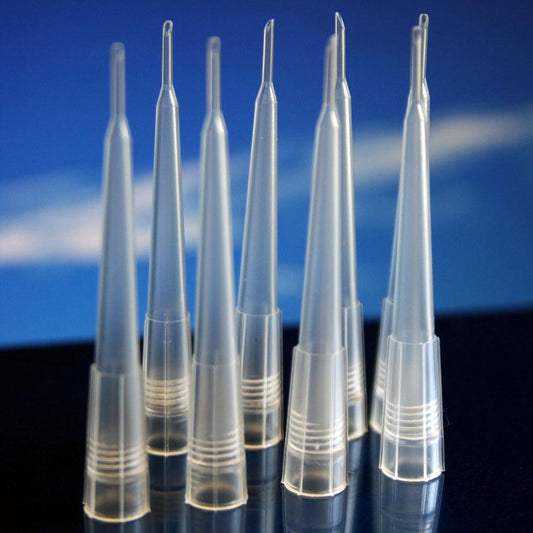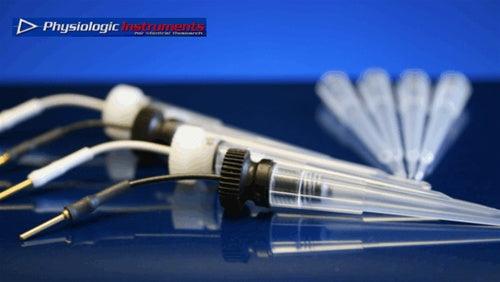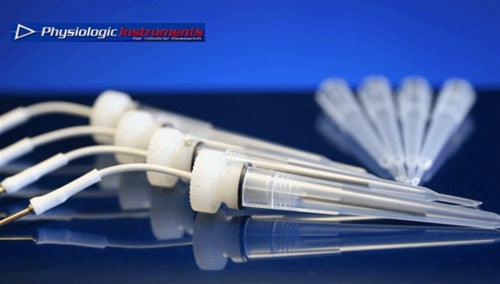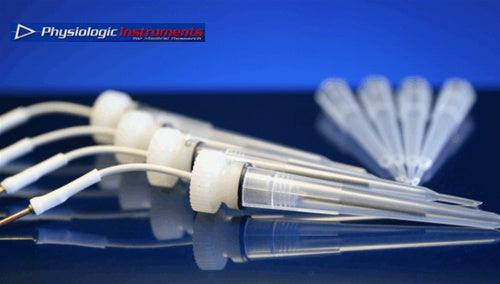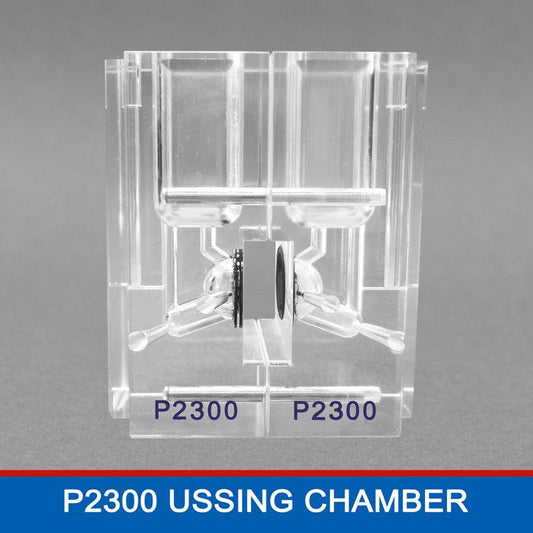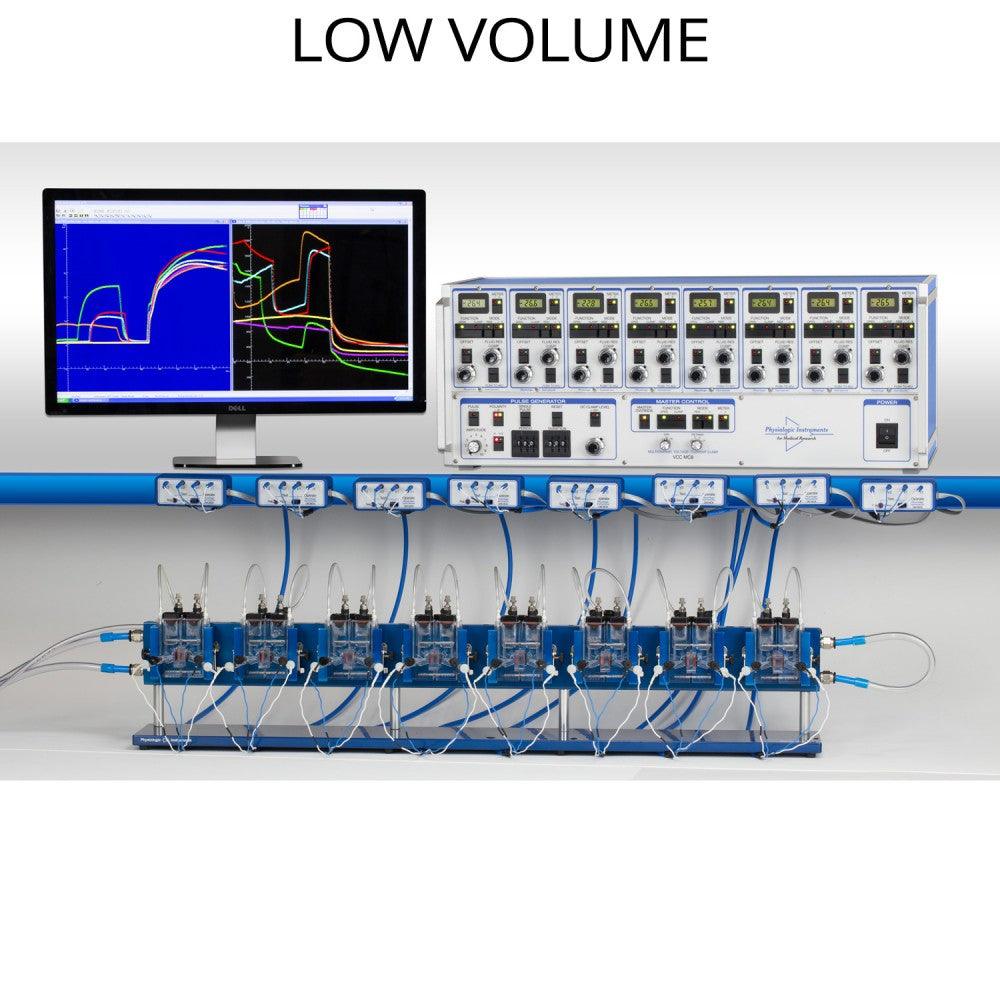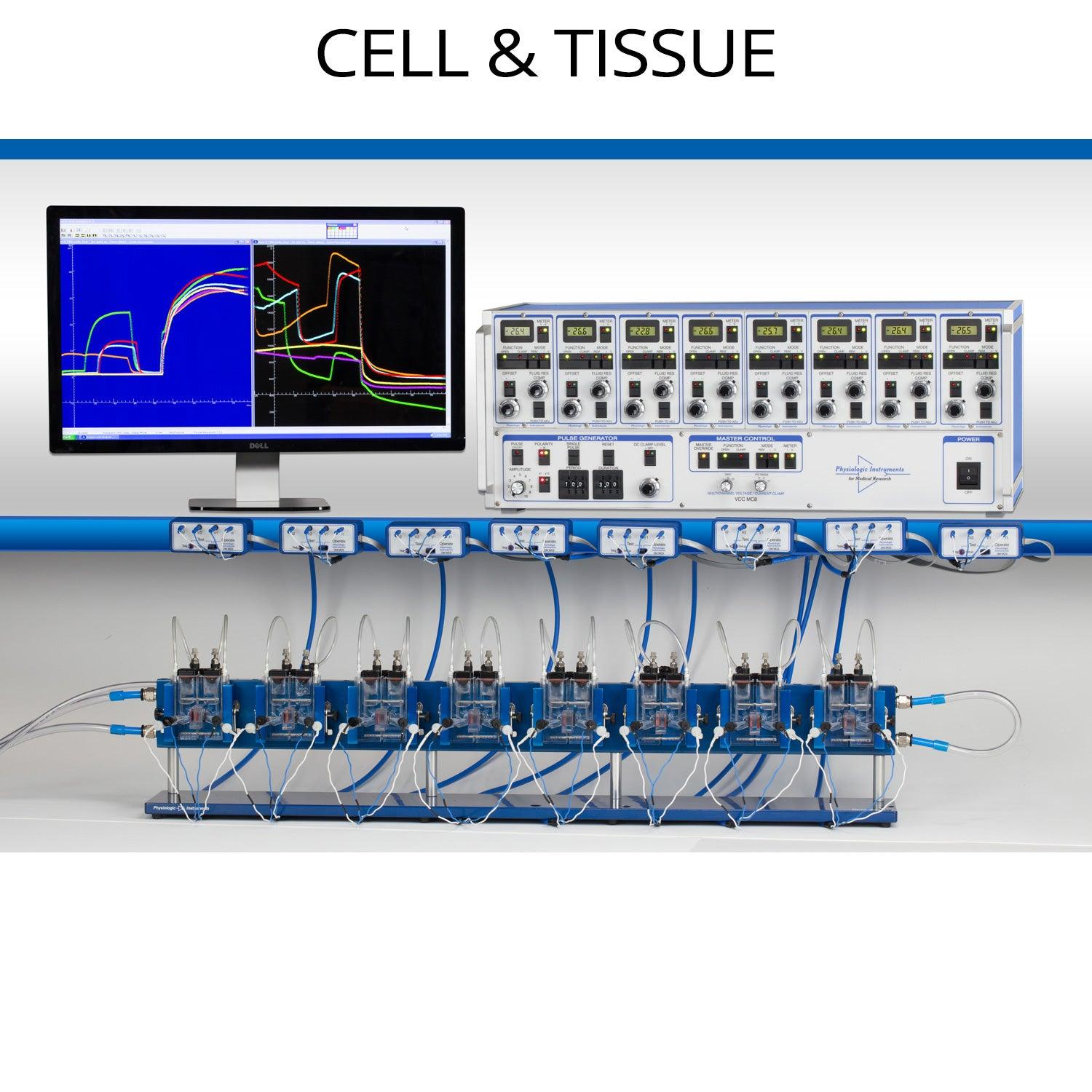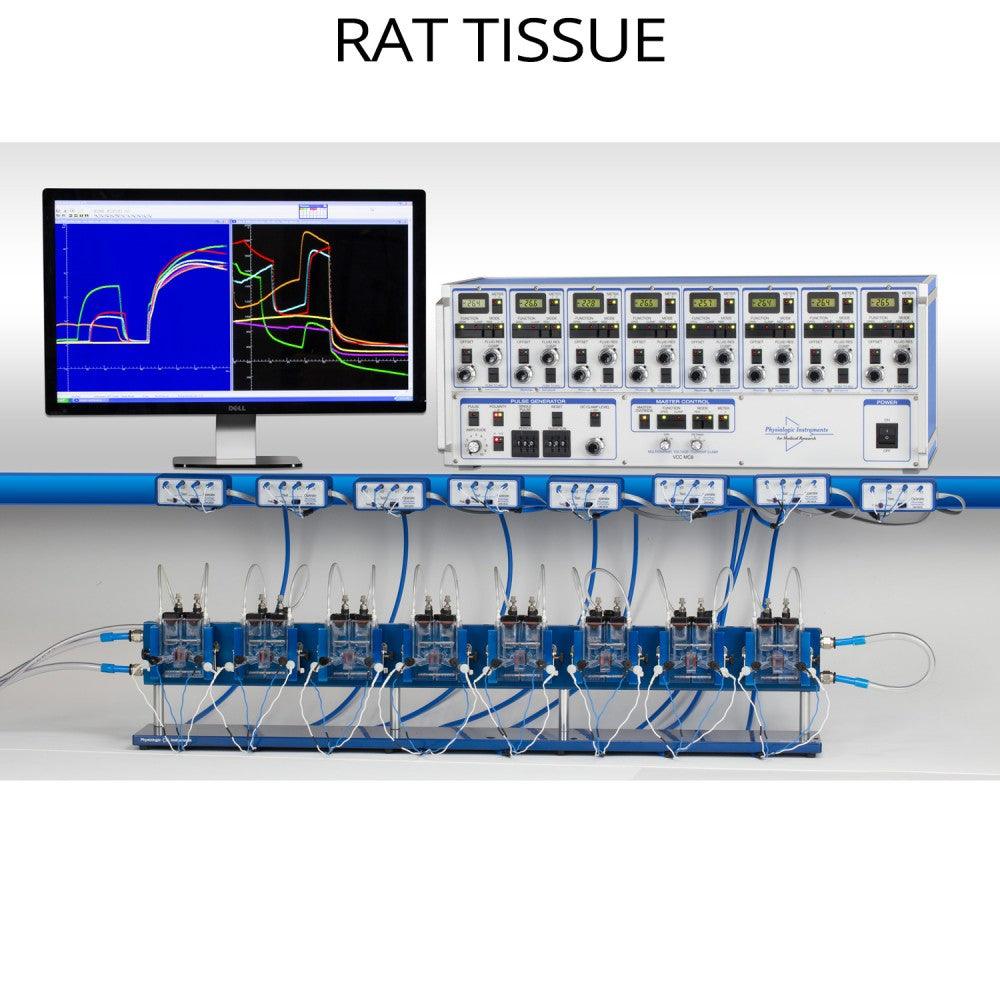EM8-C — Included Components
- VCC MC8-8S voltage/current clamp with OptiGain
- DM-MC6 Input Modules with Dummy Membrane (×8)
- Acquire and Analyze Data Acquisition package with DI-720P
- EM-CSYS-8 Chamber System
- P2300 Ussing Chambers (×8) & P2300 Chamber Caps (×8)
- P2020-S Electrode Sets (×8) & P2024-40 Electrode Lead Sets (×8)
- P2060 Air Valve Sets (×8)
- FN15 Filling Needles (×16)
- GWB1 Gas Washing Bottle (1 L)

